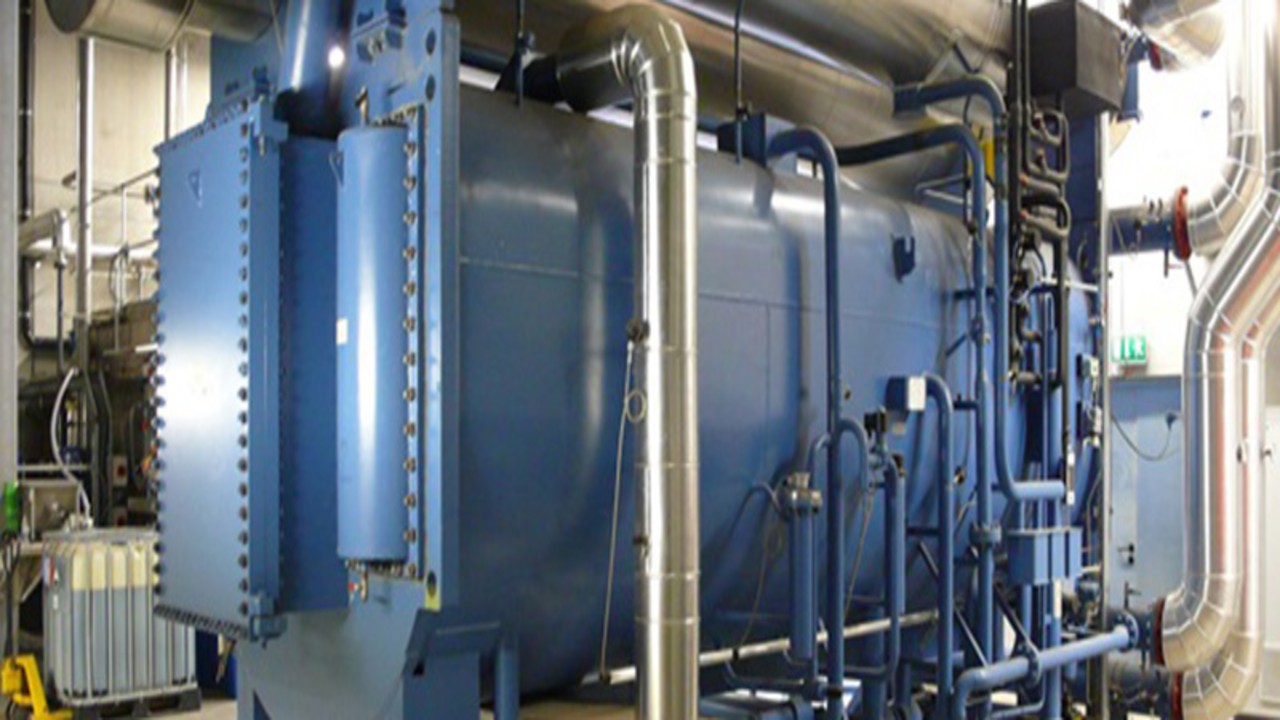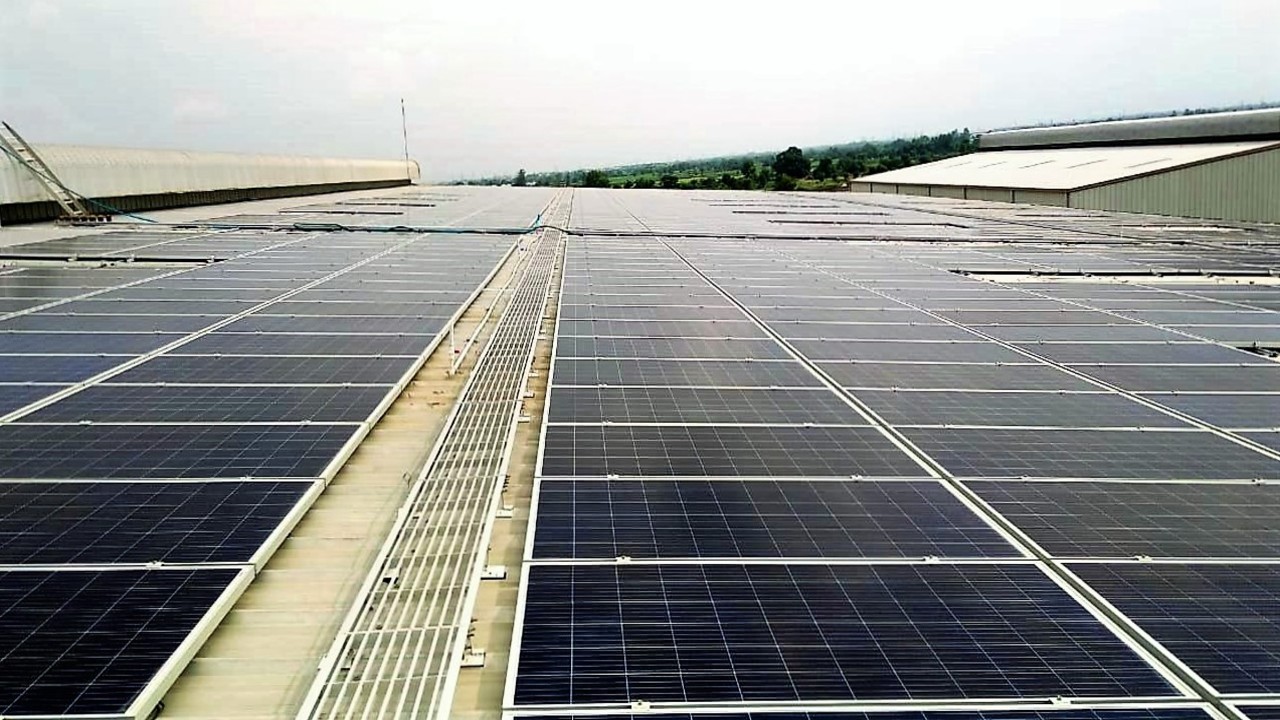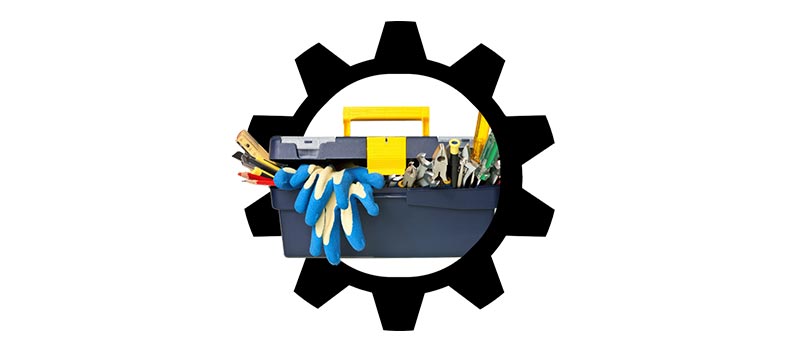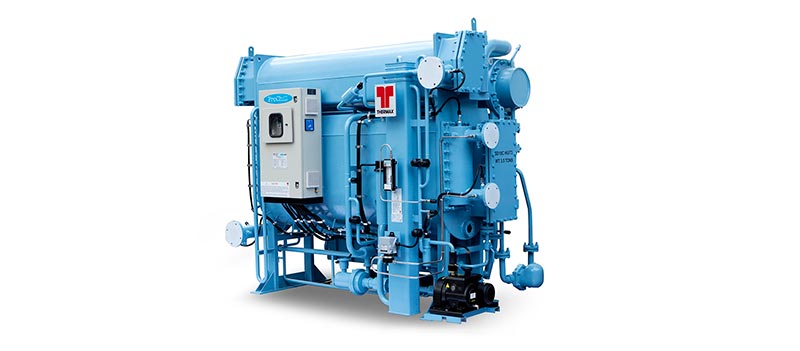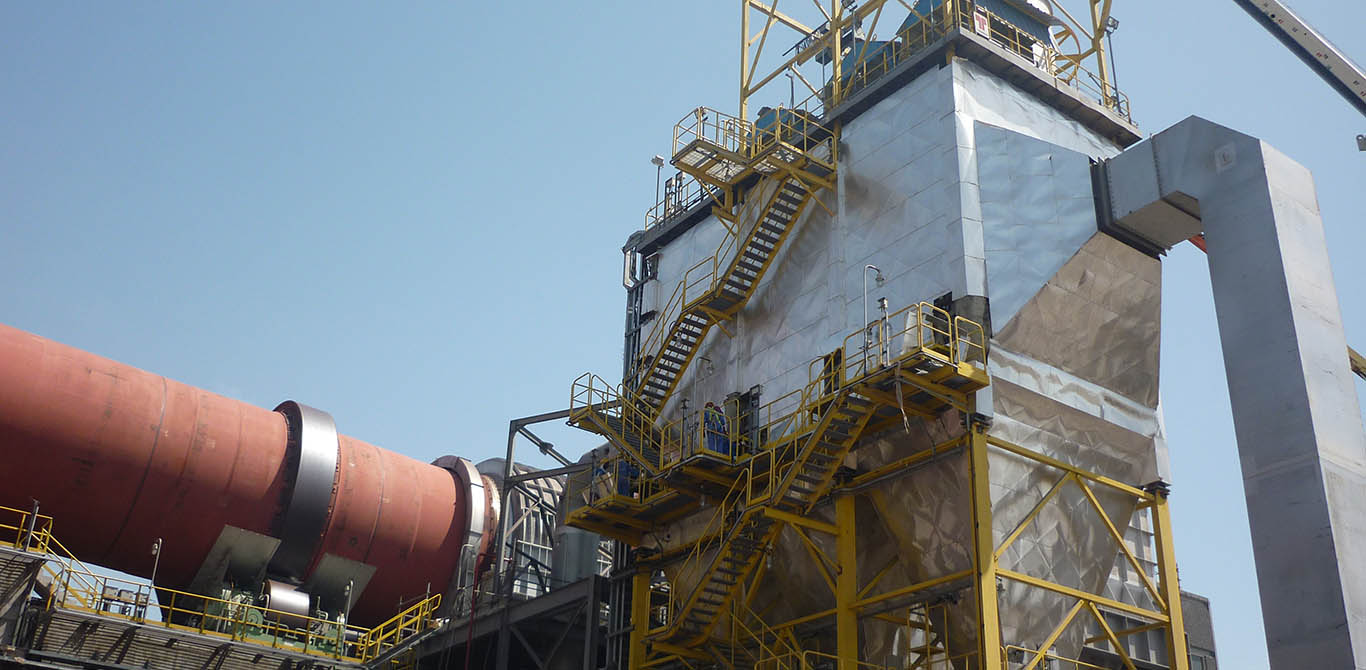Month: August 2020
Safety starts with the right attitude and behaviour
Every year March 4th is celebrated as National Safety Day commemorating the Foundation Day of the National Safety Council and the first National Safety Day (NSD) Campaign which was launched in 1972.
The campaign now entering its 45th year, has grown into a major national campaign widely celebrated by industries, trade unions, government departments, regulatory agencies NGO’s and institutions with the active support of the Central and State Governments and media. It has made an impact on the industrial scenario at the national level by contributing to increased safety awareness and reduction in accidents. Started for a single day on March 4th as NSD, the campaign is now being spread over a week from March 4-11. Today, March 4, 2016 marks the 45th National Safety Day.
As safety is a top priority at Thermax, we look forward to this day each year as an added springboard for how we work all year round towards our goal of zero accidents and a healthy work environment.
Theme for 2016:
“STRENGTHEN SAFETY MOVEMENT TO ACHIEVE ZERO HARM”
Hazards at Work
Whatever sort of business you are, there is always the possibility of an accident or damage to someone’s health. All work exposes people to hazards, be it: loads which have to be manually handled; dangerous machinery; toxic substances; electricity; working with display screen equipment or even psychological hazards such as stress.
Preventing accidents and health damage
The underlying aim of good health and safety management is to make sure that people’s safety is not put at risk and that their health is not damaged Remember, no job is important that we can’t take time to perform it safely.
Attention to health and safety is not just about obeying the law and being socially responsible. It also makes good business sense.
Safety practices can:
- reduce your accident losses;
- cut absenteeism;
- help you become more efficient; and
- improve your business profile with customers, clients, insurers, enforcers etc.
The key to ensuring the safety and health of young people in the workplace is having a good health and safety management system which protects everyone. But young people can be at particular risk because they lack experience and trained judgement and thus they need good advice, information and supervision.
Working Together
Remember, you cannot achieve a safe and healthy working environment on your own. It has to be a team effort. You need to get proper health and safety co-ordination going with other businesses with which you come into contact such as clients, customers, suppliers or contractors. Don’t wait for things to go wrong and then go for the ‘quick fix’. Build health and safety in from the start. Don’t delay – make time and space to get started today!
Why vapour absorption technology is the way forward?
In an era of heightened awareness of energy efficiency and the associated environmental impacts, many industries worldwide are exploring environment friendly technologies that provide equivalent or improved performance while reducing or eliminating harmful side-effects. The refrigeration and air-conditioning industry, due to its reliance on CFCs and HCFs, has invested in research in alternatives to the industry standard vapour compression machines.
One alternative technology with great promise is vapour absorption technology. Absorption chillers offer comparable refrigeration output with reduced SO2, CO2, and NOx emissions. Absorption chillers do not use CFCs or HCFCs, refrigerants that contribute to ozone depletion and global warming.
Additionally, gas-fired absorption chillers can save significant amounts in energy costs when used in combination with a vapor compression chiller in a hybrid system. The hybrid system can take advantage of the comparatively low price of natural gas (per unit ton) and rely on the high performance of vapor compression when electricity prices are lower.
Understanding Vapour Absorption Technology
One of the oldest methods to mechanically cool a space is with absorption technology. Vapour Absorption Technology is an alternative cooling technology that saves money and reduces the environmental impact of your cooling solution.
Unlike conventional electricity driven Compression machines, Vapour Absorption Machines (VAMs) are driven by waste heat sources like Steam, hot water, natural gas, fuel oils, Agro waste and other similar fuels.
Since heat is the source of energy, operating cost of VAMs is minimal making it more suitable for industrial usage.
Benefits of using Vapour Absorption Technology
The benefits of encouraging potential consumers to install absorption chillers for their chilled water and air conditioning requirements are two-fold.
Firstly, absorption systems use no CFCs or HFCs, so are environmentally friendly; secondly they have very few moving parts and are consequently relatively easy to maintain.
Thermax Profetherm promotes Vapour Absorption Machines as a cost effective and environment friendly alternative to electricity driven compression chillers.
For more details log on to http://www.thermaxprofetherm.com
How do absorption chillers work?
Curious to know how an absorption chiller works? Don’t worry we’ve got you covered.
For beginners, an absorption chiller is a closed loop cycle that uses waste heat to provide cooling or refrigeration.
This absorption cooling cycle relies on three basic principles:
- When a liquid is heated it boils (vaporizes) and when a gas is cooled it condenses
- Lowering the pressure above a liquid reduces its boiling point
- Heat flows from warmer to cooler surfaces.
The process of absorption cooling is dependent on a thermochemical ‘compressor’. Two different fluids are used: a refrigerant and an absorbent. The fluids have high “affinity” for each other, which means one dissolves easily in the other.In a water-lithium bromide vapour absorption refrigeration system, water is used as the refrigerant while lithium bromide (Li Br) is used as the absorbent. In the absorber, the lithium bromide absorbs the water refrigerant, creating a solution of water and lithium bromide.
The refrigerant—usually water—can change phase easily between liquid and vapour and circulates through the system.
Heat from natural gas combustion or a waste-heat source drives the process. The high affinity of the refrigerant for the absorbent (usually lithium bromide or ammonia) causes the refrigerant to boil at a lower temperature and pressure than it normally would and transfers heat from one place to another.
STEP 1
Boiling point of the water acts as a function of pressure. At atmospheric pressure, water boils at 100 deg. C. When maintained at high vacuum, water will boil and sub-cool itself. The boiling point of the water at 6 mm-Hg (abs) is 3.7 deg.C.
STEP 2
Lithium Bromide (LiBr) has the property to absorb water (Refrigerant) due to its chemical affinity. It is directly proportional to concentration and inversely proportional to its temperature.
STEP 3
Diluted LiBr loses its capacity to absorb water vapour. Thus, needs to be re-concentrated using a Heat Source. Heating may be in the form of Steam / Flue gases / Hot water /fuel firing.
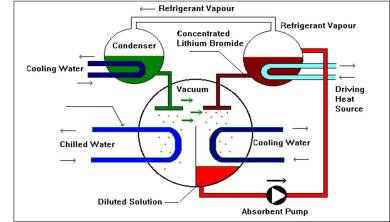
STEP 4
The heating causes the solution to release the absorbed refrigerant in the form of vapour. This vapour is cooled in a separate chamber to become liquid Refrigerant.
Solar power plant installations: Lease with ease
Rooftop solar PV installations have seen tremendous growth over the last decade. Improvement in module efficiency and falling costs year on year have made setting up of solar PV plants an attractive proposition. High electricity tariffs charged by the DISCOMs and unreliable power supply have provided further impetus to organisations deciding to generate their own power. Also, with the signing of the Paris Climate accord, a lot of organisations have decided to move towards sustainable business practices, thereby creating demand for renewable solar power.
The installed capacity of rooftop solar power plants in India is estimated to be approx. 6,000 MW. Industrial and commercial customers have been at the forefront of setting up solar power plant for captive consumption accounting for more than 67% of the installed base. Since electricity cost comprises a major expense for both industries and commercial establishments, replacing costly grid power by investing in rooftop solar system helps them in improving competitiveness and profitability. A healthy payback of 3-3.5 years on an average with lower LCOE (Levelised Cost of Energy) has increasingly made setting up solar power plant for captive consumption an obvious choice for most companies.
While there are many existing models to finance your plant, investing in your own solar power plant ensures maximum benefits. The plant not only generates free power for 25 years, but you can also gain by claiming accelerated depreciation and reducing your carbon footprint, besides meeting RPO obligation through solar power.
However, it might not always be possible to allocate capital for investing in solar power plant. For example, in the current situation with organisations reeling under the impact of COVID-19, preserving capital has taken precedence over investing in projects. Sometimes the constraints might be on obtaining bank financing, or the customer might have other investment opportunities or capex requirements in their core business which needs to be prioritised.
Leasing provides a perfect solution for gaining most of the benefits of self-financing with little upfront investment. In this model, the customer obtains the rooftop solar system on lease from a financing partner by agreeing for a down payment (typically 15%-20%) and an agreed lease rental for a fixed period (up to 60 months). The monthly rentals are worked out such that the electricity cost saved is higher than the lease payment, thereby ensuring net savings. During the lease period, the customer is also able to gain tax benefit by accounting for lease payments as an expense. Also, leasing does not lead to an increase in liability as the asset stays off the balance sheet of customers. The project and performance risks are borne by the EPC partner on whom the financing company places a turnkey order. At the end of the lease period, the customer has the option to purchase the investment at the residual value and enjoy free solar power for the remaining 20+ years.
Thermax has executed multiple projects for its customers under the leasing model. We have pre- approved tie-ups with reputed financial partners to make it a seamless experience for customers. Once the customer chooses to go for leasing, Thermax brings on board the financial partner who then conducts the necessary due diligence. Once approved, an EPC order is placed on Thermax to set up the solar power plant with agreed specifications and timelines. The entire process is managed with minimal paperwork and on an average takes less than 3-4 weeks from application to order placement. Following are some examples of our successful installations through leasing model:
1. 1,000 KWp solar power plant for footwear manufacturer
2. 742 kWp rooftop solar plant for a leading sports company
3. 500 kWp rooftop solar plant for food & packaging company
4. 250 KWp solar power plant for a leading food processing company
Visit https://www.thermaxglobal.com/solar-offering/ to know more about solar offerings.
To enquire: enquiry@thermaxglobal.com
To call: 1800-209-0115
Preventive care: nitrogen blanketing
One of the most important aspects of preventive care in absorption chillers is ‘preservation’. This is ignored many times resulting in frequent issues due to corrosion, loss of efficiency and shortening of the service life of the equipment.
The most critical breakdown in a chiller apart from component failure occurs when the vacuum breaks either due to tube ruptures, leaks or if there is any physical reason for ingress of air in the machine such as leaks through the service valves or gland, leaving the purge valves open allowing air to enter the chiller or leaving the machine open during any repair or maintenance work.
As Lithium Bromide (LiBr) is highly corrosive in the presence of atmospheric oxygen, the corrosion process starts. It is therefore important that in such situations quick actions are initiated to seal off the leaks temporarily and keep the machine under an inert nitrogen atmosphere until a permanent action is initiated.
One of the common mistakes most technicians do after sealing off the leaks in the tubes or welding of the chiller is that they quickly charge nitrogen in the machine and declare that the machine is safe under preservation.
This should be strictly avoided as there is atmospheric air already present inside the chiller. This is because during the leak either air or water containing atmospheric oxygen enters the chiller through the leaking area and gets trapped in the chiller. It is therefore important to realise this fact.
Charging the machine with nitrogen only increases the pressure of the air inside the shell. Since this trapped air inside the chiller shell contains oxygen, the process of corrosion gets initiated. Hence in such situations it is extremely important that only after the leaking areas are sealed off with reasonable strength such as plugging, welding etc. that a vacuum is created in the machine by running the vacuum pump and pulling out all the entrapped air.
On reaching this attainable vacuum,(refer chart for attainable vacuum to be pulled w.r.t the ambient temp prevalent at the time of purging) the chiller should be kept under the vacuum hold test for at least 12 hours and checked for vacuum drop. In case a drop in vacuum is observed, the chiller should be rechecked for leaks and such leak should be attended and the process repeated till the attainable vacuum and vacuum hold test is achieved.
Only then should the machine be charged with nitrogen so that the gas fills up the entire shell and an inert nitrogen atmosphere is achieved. At no point should the chiller be left unattended allowing air to stay for long inside the chiller. This is also applicable for any normal long or short duration shutdowns when the chiller is taken out of service. A proper de-commissioning procedure should be performed to ensure trouble-free operation and longer life of the equipment.
7 smart energy saving resolutions for 2016
As we bid goodbye to 2015, we usher in a new year with champagne toasts, singing ‘Auld Lang Syne’ and- of course -resolutions. Why not make 2016 the year each of us resolve to take simple steps to save energy? Here are a few ideas to help get you started:
- UNPLUG UNUSED ELECTRONIC DEVICES: Each of us need to consciously switch off and unplug our devices when not in use. Every time we leave the room, we must switch off all the lights, fans and unplug all charging devices.
- SWITCH TO LED:If you are thinking of switching to LED (light emitting diode) lighting in 2016, you are making the right choice! LEDs are expected to get even more affordable and energy efficient in the coming year and will help you save on those huge electricity bills.
- REGULAR MAINTENANCE CHECKS FOR COOLING AND HEATING DEVICES: Properly maintaining your heating and cooling system will extend its life and save you energy and money.
- HEAT AND COOL NATURALLY: Use natural sunlight to your advantage. It is free, clean and abundantly available. During winter months, you can take advantage of sunlight by opening your curtains during the day to allow the sun to naturally heat and provide light to your home.
- INVEST WISELY FOR YOUR BUSINESS:Strive to ensure that your business is eco-friendly too! Get in touch with us at Thermax Profetherm for Profit from Heat solutions for your facility that will help you reduce your carbon footprints and emissions, increase productivity and save money.
- SPREAD AWARENESS ABOUT ENERGY CONSERVATION:Each time you notice someone wasting electricity, make it a point to bring it to their notice. Saving energy isn’t possible without everyone’s involvement.
- TRACK YOUR PROGRESS IN SAVING ENERGY: It is no secret that New Year’s resolutions can quickly go by the wayside. To help you stay on track, set goals that are specific and measurable. How do you measure your progress? Simply compare your monthly energy usage with that of previous years. The energy that you save should provide enough incentive to keep you going all year long.
All you need to know about the absorption chiller market
Absorption chillers are a type of refrigerant. It contains lithium bromide-water (LiBr/H2O) and ammonia-water as a main constituent for refrigeration application. Unlike conventional compression chillers, absorption chillers utilize heat energy for cooling purpose rather than mechanical energy. One of the simplest applications of absorption chillers is found in residential refrigerators, which contains a gas flame at the bottom of the machine, and an ice cubes at the top of the machine and there is no electricity involved in whole refrigeration cycle. However an absorption chiller used in commercial and industrial refrigeration much larger in size and more complicated in terms of design technology, but the basic operating principle remains the same. Some of the major components of an absorption chiller arrangement include generator, evaporator, condenser, and the absorber. Some of the major end user application of absorption chillers is found in refrigeration, oil and petroleum industry, chemical industry, geothermal appliances, freezing and food canning.
Globally, on the basis of the product, the absorption chiller market can be broadly classified as exhaust gas (multi energy) chillers, hot water fired chillers, steam Fired Chillers and Natural gas fired Chillers.
On the basis of various design technology involved the absorption chillers market can broadly categorized as single effect absorption chillers, double effect absorption chillers and Triple Effect absorption chillers. Single-effect absorption chillers design technology is the most widely used since it have coefficient of powers (COP) in range of 0.6 to 0.8 out of an ideal 1.0. Single effect absorption chillers are used in various industries such power plants and boilers.
The global absorption chillers market is driven by the various cost and performance benefits associated with it. The use of gas based cooling system provides lower operating cost by avoiding peak electric demand charges. Moreover absorption chillers offer quiet and vibration-free operation of refrigerator, improved system efficiency and reliability, and lower maintenance cost over long run.
The high initial cost of absorption chillers over some of other conventional compression chillers is one of the major restrain of the market predominantly within the context of cost conscious consumers of developing economies.
North America is the largest market of absorption chillers followed by Europe and Asia Pacific. The high concentration of allied industries such chemicals, petroleum, and processed food in North America is one of the key factor contributing to the dominance for absorption chillers market in this region. Asia Pacific is the fasted growing market of absorption chillers followed of Rest of the World (RoW) which includes Middle East, Latin America and South Africa. The rising market of absorption chillers in Asia Pacific is mainly fueled by the increasing demand from the emerging economies such as India and China. Moreover the shortage of electricity and lack of proper electrical distribution infrastructure in developing countries is further helping in adoption of energy efficient appliances in this region.
Techniques of Air Pollution Control
Air Pollution is defined as the presence of certain substances in the form of particles or gases in concentrations high enough and for durations long enough to cause harm or undesirable effects. Most air contaminants originate from combustion or reduction processes.
Each year the numbers of possible sources increase rapidly with the accelerating trends of population growth, urbanization, industrialization and increased affluence.
Air pollutants are many and have differing physical and chemical characteristics, as also a vast number of sources. Common pollutants include dust, soot, ash, carbon monoxide, carbon dioxide, sulphur dioxide, oxides of nitrogen, hydrocarbons, chlorofluorocarbons (CFC), lead compounds, asbestos & cement dust, pollens, and radioactive rays.
The techniques of air pollution control is used to reduce the gaseous & particulate emissions of harmful substances that can affect not only human health but also the environment.
Therefore, a good understanding of the pollutants and their sources is necessary before a particular control technology is implemented and applied to any particular situation.
To effectively clean the pollutants would require an increased application of control procedures as well as the adoption of new techniques. The selection of control technologies depends on environmental, engineering, economic factors and pollutant type.
Latest techniques of air pollution control are:
- Combustion – This method is applied when the pollutants are organic gases or vapours. The organic air pollutants are exposed to ‘flame or catalytic combustion’ when they are converted to less harmful product carbon dioxide and product water.
- Absorption – In this technique, the polluted air containing gaseous pollutants is passed through a scrubber carrying a suitable liquid absorbent, which absorbs the harmful gaseous pollutants present in the air.
- Adsorption – In this technique, the polluted air is passed through porous solid adsorbents kept in suitable containers. The gaseous pollutants are adsorbed at the surface of the porous solid, and clean air passes through.
- Means of controlling particulate emissions -The air pollution caused by particulate matter such as dust, soot, ash, etc. can be controlled by using fabric filters, wet scrubbers, electrostatic precipitators, and certain mechanical devices, that work on the basis of the following:
- Gravity – In this process, the particulate settles down by the action of gravitational force and gets removed.
- Rapid change in the direction of air flow – This brings about separation of particles due to greater momentum.
- Fabric Filters – The particulate matter is passed through a porous medium made of woven or filled fabrics. The particulate present in the polluted air is filtered and gets collected in the fabric filters, while the gases are discharged. The process of controlling air pollution by using
fabric filters is called &’bag filtration’ - Wet Scrubbers – They are used to trap SO2, NH3 and metal fumes by passing the fumes through the water.
- Electrostatic Precipitators – When the polluted air containing particulate pollutants is passed through an electrostatic precipitator, it induces an electric charge on the particles, and then the aerosol particles get precipitated on the electrodes.
Thermax Group provides a range of engineering solutions that are sustainable and environmentally friendly in nature. Thermax is among the top five manufacturers of industrial pollution control equipment in India and offers innovative and sustainable solutions that solve problems of air pollution. They offer single-source expertise for several areas of protection of the environment. These include products and systems for air pollution control, services for equipment that specializes in dealing with gaseous and particulate emissions.
Thermax focuses on resource recovery which is advantageous to process focused industries and provides several customized products for controlling air pollution:
- Ash control after combustion in Boiler: The ash being generated after combustion of Fossil fuel or any biomass like rice husk, wood chips, Bagasse, Spent Wash, Palm Fiber, Empty fruit bunch (EFB), Coal, Anthracite, Lignite, inside a Boiler is called as Suspended Particulate Matter (SPM). This ash creates various size of particulates that are emitted from the Stack or Chimney after the Boiler. To control this SPM (ash) of variety suitable Air Pollution control device are selected like Electrostatic Precipitator (ESP), Pulse Jet bag Filter (PJBF), Scrubber, High Efficiency Cyclone, Electrostatic Fabric Filter(ESFF). Major industry that needs to focus like Power, Textile, Food, Brewery, Agro, Palm, Edible Oil, Cement, Steel, Sponge Iron.
- Fume Extraction and De-dusting Systems – These systems are installed to seize fumes from all kind of electric arc (EAF), induction, ladle, submerged arc furnace. The right product and solution that will help protect the environment and safe disposal can help attain clean air in the operating zone. The process is completely safe and takes place without formation of dust or deposition due to the optimized air velocity in these systems. Major industries are Secondary steelmaking from Sponge Iron, Scrap, Alloy steel, Steel Rolling, Continuous Casting Machine, Ferroalloy like Ferro-manganese, Ferro Silicate, Ferro Chrome, Cast House, Stock House, Gas Cleaning
plant etc. - Pushing Emission Control Systems – These systems control emissions that are produced from hot coke being discharged from an oven of a coke battery from the beginning of the discharge to the time the coke reaches the quenching station. This system is designed to capture solid emissions that result from coke pushing and cleans
them. Major Industry are primary Steel Making. - Flue Gas Desulphurisation [FGD] – Oxides of Sulphur (SOx) adversely affects the environment. Desulphurisation helps in reducing the harmful effects of SOx through dry, semi-dry and wet systems. Major Industries Power plant, Glass furnaces, Oil Fired boiler and Turbines
- Sinter Plant and Pellet Plant De-Dusting – Sintering is the process that is conducted to fuse the constituent materials of iron ore to make a single porous mass that can be used in a blast furnace. Pelletizing is used to turn fine iron-ore grains into pellets that can be used in blast furnaces and are suitable for direct reduction
- Coal Preparation Plants – These plants consist of equipment for storing and handling raw coal. They also have a section for pulverizing, grinding, drying and collection of coal through a bag filter.Coal preparation plants convert coal to fine dust for faster combustion inside the Blast Furnace. It also can replace the use of Coking Coal thereby making it safe and at times cost-effective solution to be used by major steel plants, Cement plants for firing in Kiln Thermax is one of the rare chemical companies in Pune that offers all these efficient and eco-friendly services under one roof. This makes them reliable partners who provide solutions to critical energy challenges of their clients.
Captive power plants
Competition in today’s market is significantly wedged by the reliability on grid power and the poor quality of power in the industry, which has compelled the industrial sector to move to captive power generation. A captive power plant helps industries to generate power for its own consumption.
The mushrooming demand for power in the emerging global markets of China, India, and Middle East, has further propelled the growth in the captive power generation market, which is consumed across a wide spectrum of industries.
Considering the surge for this alternate source of power, companies such as ours provides turnkey captive power solutions to industries like cement, textile, steel, paper, fertilizer, chemicals, food, pharma etc. Some of the advantages of installing a captive power plant are low power cost, reduced distribution and transmission losses, and higher thermal efficiency.
Thermax, a leading energy and environment solutions provider, specialises as the evangelist of the EPC (Engineering, Procurement and Construction) concept based on biomass, waste heat, natural gas, coal and solar. Thermax has an experience of contracting more than 3000 MW of power plants on EPC basis across India, South East Asia, Middle East and Africa. As a leading EPC player, we set up power plants providing least lifetime cost, timely delivery and high performance. Thermax also supports its customers beyond project completion by providing operations and maintenance services for power plants.
Thermax is also into the business of installing solar PV projects on rooftop or ground mounted as a green economical alternative across the country. We provide end-to-end support to our customers, from concept till commissioning and O&M support




